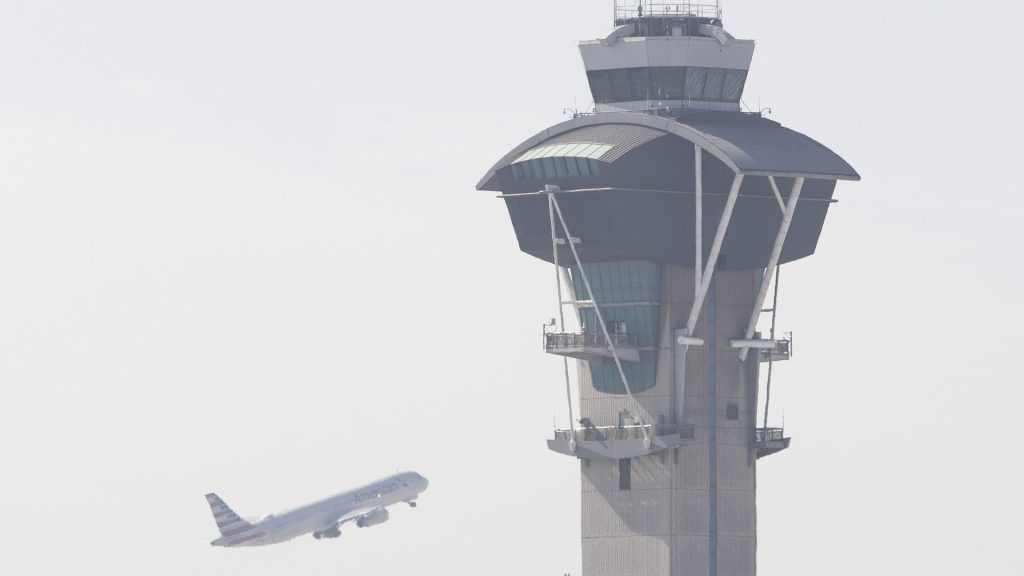The quietly powerful group keeping US air traffic control privatization grounded

Air traffic control continues to be an issue during the ongoing government shutdown, with the FAA announcing a reduction in air traffic. Could the U.S. become like many other countries and take air traffic control out of federal government control?
Canada, the UK, Germany and other large countries around the world have either private air traffic controllers or treat them more akin to a public utility.
If air traffic control were to go private in the U.S., there’s a few options.
Private ownership
“Private ownership is different from profit maximization,” Rick Geddes, professor at Cornell University and founding director of the Brooks Center for Infrastructure, told Straight Arrow News. “You can have private nonprofits and private for profits. So, I would recommend a private nonprofit structure which is based on the Canadian model.”
The Canadian model is called Nav Canada and began in 1996, operating as a nonprofit.
“It’s funded entirely by user fees,” Geddes said. “So rather than relying on a government allocation to keep air traffic control going, they charge fees for the use of the air traffic control system.”
Those fees come from airplane operators and are mostly based on the weight of the plane and distance flown.
Then there’s NATS in the United Kingdom which is a for-profit organization.
“Even in that case, the government is the largest shareholder and possesses a golden share that lets it out vote all the other shareholders,” Marc Scribner, senior transportation policy analyst at Reason Foundation, told SAN.
Scribner said describing this as privatization is a bit of a “misnomer.”
“What’s really been happening is the conversion of air traffic control into a utility rather than an agency,” he said.
That model began in 1987 in New Zealand with a company called Airways. The country moved air traffic control out of the hands of government agencies into a separate organization still owned by the government.
Other countries have since followed suit.
“The most common model is that government corporation model, so you have arm’s length separation from the regulator,” Scribner said.
That’s not how it works in the U.S. Air traffic control is currently run by the regulator, the FAA.
Benefits to the U.S. privatizing
“I think it would be a big improvement for the United States,” Geddes said.
Scribner agreed and pointed out some of the benefits.
“One advantage is you don’t have to beg legislators for money,” Scribner said. “You don’t need to fund improvements on a government appropriations basis.”
That would help air traffic control avoid issues like what it’s currently facing.
“You wouldn’t have to worry about things like the current budget shutdown affecting the performance of the air traffic control system,” Geddes said.
That’s because the money to run the system would come from those fees.
“Having that revenue independence go into some separate, standalone entity would be the single most important step toward reform,” Geddes continued.
Both experts SAN spoke with also pointed out other benefits to moving the system away from government would allow for tech and system improvements.
“You can make these long-term investments in new technologies, new facilities and things like that,” Scribner said. “You finance them just like they do in the private sector, just as they do in the public utility sector.”
He added another benefit to that move.
“You also ensure that the fox isn’t guarding the hen house,” Scribner said. “In terms of the regulator also operating the service that it’s supposed to be regulating independently.”
Both experts said passengers wouldn’t see major changes when they travel. However, the little changes they would see would be welcomed.
“I think you would still have a very safe system where you might notice it, maybe in terms of improved scheduling, fewer delays, more direct routing,” Scribner said.
Scribner explained how updated technology could help shorten flights.
“Air traffic control is all about ensuring safe separation of aircraft so that they don’t crash into each other,” Scribner said. “And if you’re relying on technologies, particularly over the oceans, where it’s very imprecise, you just have to assume that there are errors in your assumptions. So, you give all the aircraft very wide berths, and that means you cannot achieve density. You cannot achieve direct routing, and that means longer flight times, more delays and things like that.”
Air traffic control has repeatedly been in the headlines this year, including after the deadly crash above a Washington, D.C. airport in January that killed 67 people.
“That sort of thing should never happen,” Geddes said. “It should never, ever happen at a modern airport.”
Geddes said updating technology should help prevent tragedies like that.
“One has to wonder if an outdated air traffic control system didn’t have something to do with it, and outdated means technology,” Geddes said.
Why the U.S. hasn’t privatized
When asked to name the negatives about privatizing air traffic control, neither expert could point to one.
“I have not heard of a con argument,” Geddes said. “I have not heard any complaints about air traffic control navigation in Canada.”
“We really haven’t seen downsides to this model itself,” Scribner added. “Now, obviously, implementation challenges can be present, and some countries have had easier times in these conversions than others, but by and large, it’s been highly successful.”
So, why hasn’t the U.S. made the move?
“Politics is the main reason why we haven’t seen that happen in the United States,” Scribner said.
It’s not for a lack of trying.
Former President Bill Clinton suggested turning air traffic control into a quasi-government corporation in 1994.
Former U.S. Rep. Bill Schuster, R-Pa., attempted to do that while serving as chairman of the House Transportation and Infrastructure Committee in 2018, something President Donald Trump showed an openness towards.
Schuster’s plan would have shifted control of America’s air navigation system to a private nonprofit organization over three years. It had a lot of support.
“Notably, the union representing FAA air traffic controllers supported that,” Scribner said.
Schuster dropped that attempt after pushback from special interests killed the legislation in the Senate. Most of it came from the private plane lobbies.
“Under the status quo, those users pay a very small fuel tax,” Scribner said. “And in the case of private jets, their fuel tax collections do not come close to covering their cost of system use. So, what we have today, in effect, is a system where airline passengers who pay taxes on their tickets are cross-subsidizing the air traffic control services of private jet owners and users.”
In essence, taxpayers pay the cost of air traffic control for private and business jets. Private plane owners and users didn’t want that to change.
“They were successful in messaging the supposed threats to the national aerospace system, saying that the United States is simply too complex to move to this model that most of the rest of the world has moved toward over the last 40 years,” Scribner said.
That argument was laid out by Ed Bolen, CEO of the National Business Aviation Association, an organization for companies that use aircrafts for private business.
“When we look around at the performance in Australia, in New Zealand, in Europe, in the United Kingdom and in Canada, we see very small, not particularly complex operations compared to the U.S. and we see chronic delays,” Bolen told NPR.
Transportation Secretary Sean Duffy has taken privatization off the table. The FAA has announced a plan to scrap the outdated system.
The post The quietly powerful group keeping US air traffic control privatization grounded appeared first on Straight Arrow News.





